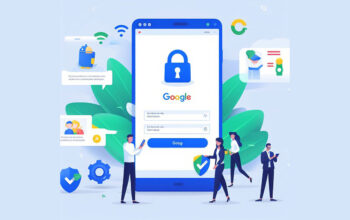What’s the most important step you can take to protect your online accounts? You might be surprised.
Online threats are everywhere. It’s not surprising, really. Every day, businesses, individuals, and even governments generate gigabytes of personal data. This data contains everything from bank account details to health information to email addresses and phone numbers. The threats to this data are enormous: it can be sold so that it can be used for identity theft, or it can be sold to other companies who will send you spam emails.
Cybersecurity is one of the most important topics that people need to be aware of today. It is important to be proactive and take steps to protect yourself online. There are a few simple things that you can do to help protect yourself from cyber threats.
The Basics of Online Security
Online security is hard. There are a ton of online threats out there, but you can stay safe from most of them with these rules.
- Don’t click suspicious links. It sounds easy, but it’s also the number one way people get their data compromised. If something looks fishy, don’t click.
- Don’t give out personal information. There are a lot of people out there who want your personal information, and they’re willing to use any means they can to get it. Keep your information safe by making sure you’re only sharing it with people or services you trust.
- Use two-factor authentication. Two-factor authentication is an extra layer of security that lets you know when someone is logging into your account from a device or location other than yours. Without two-factor authentication turned on for all your accounts, anyone could be logging in and stealing your data without your knowledge! Most online platforms offer this feature to increase online security.
- Check in on your accounts regularly. Always log into your accounts every once in a while to make sure nothing has changed since the last time
- Use virus and malware protection for your devices. Try to use good antivirus software to protect your devices from malware and viruses and always keep the software updated.
- Keep your credit card information, tax returns, and other sensitive personal information safe from prying eyes;
- Use strong passwords. This is the most basic and important step you can take to keep yourself safe online. A strong password uses a combination of letters, numbers, and symbols to make it harder for hackers to guess or crack.
- If you need to share any files or documents with other people then securely share them;
- Try to be careful with the information you provide on the internet. The more information an attacker has about you, the easier it is for them to impersonate you! Be judicious about what you share on social media and elsewhere online, even seemingly-innocuous details can help someone piece together enough information about you to cause real damage.
- Don’t re-use passwords. If possible, never use the same password for more than one account! If a hacker cracks one of your passwords, they will try it on all your other accounts—if one of them uses the same password, then they will be able to get in, and it will compromise your online security.
Use these suggestions to keep your device safe
Cybercriminals are ruthless—they’re always on the lookout for vulnerable computers to attack. As a result, it’s important to take precautions so that you don’t become a victim of identity theft or some other kind of cyberattack. Here are some steps you can take to help keep yourself secure when using the internet and ensure your online security.
- Keep your computer updated. When you get a notification from Microsoft to update your computer, do it! These updates often include security patches that will help protect you from new kinds of cyberattacks.
- Use strong passwords. Try not to use the same password for all of your accounts, and make sure they’re strong enough that hackers can’t guess them easily. Keep your passwords safe. Never share them with anyone, change them frequently.
- Don’t click on links in emails from people you don’t know. If there’s no way that person could have sent you an email (like if they don’t have your email address), their account has probably been hacked by cybercriminals who want to get into your account as well.
- Use your firewall to increase online security. It helps protect your computer from hackers who might try to gain access to crash it, delete information, or even steal passwords or other sensitive information.
- Download files wisely. Only download files from sites you trust like SourceForge, OSDN, FossHub, GitHub, F-Droid, Dolibarr ERP & CRM, and scan any new files before opening them, especially if they came from a peer-to-peer network or another third party site.
- Be careful with public Wi-Fi. Using public Wi-Fi leaves your device vulnerable to data theft, so turn off your Wi-Fi when you’re not using it.
How to Avoid Scams / Fraud and Protect Your Privacy
Scammers often use the internet to trick people into giving them sensitive information, including passwords and bank account numbers. Here are some examples of common online scams:
- Fake offers: scammers create fake ads or websites that seem like they’re offering something valuable, like a free mobile phone or a loan at a great rate. These scammers hope that you’ll provide your info, so they can steal your identity.
- Phishing scams: the scammer pretends to be an official company representative and asks for your information. For example, a phisher may send you an email that looks like it’s from your bank and asks you to confirm your password or account number. If you give the information, the phisher can log in to your accounts as you and steal your money.
- Scareware, often known as “Fake AV,” occurs when a fraudster claims that their program has discovered a virus.
- Make sure you’re aware of your privacy settings. You should immediately set all social media profiles to private if you haven’t already, which will prevent strangers from seeing your account and becoming too familiar with who you are and where you live.
- Make sure that you’re only shopping with reputable retailers. You can check a business’s reputation by finding reviews—but remember that not all of these reviews will be reliable!
- Catfishing: this is when someone pretends to be someone else online by using fake photos and videos. Sometimes catfishing is used for romance scams—the catfish will ask for money for expenses or emergency medical treatment, among other things. Other times, the catfish will try to befriend you to commit other types of fraud or identity theft.
The guide above provides in-depth, step-by-step instructions to help you protect your personal information. Don’t rely on your device to protect you, educate yourself, and use common sense when surfing the web or downloading applications.
Don’t forget that your financial information such as email passwords and credit card numbers should also be protected with a strong password. The tips provided here should help you take the first steps towards improving your online security. Although we covered a few different topics in this article, there are plenty of other avenues to explore as well. For example, you might want to add two-factor authentication to your accounts if you haven’t already. It’s a powerful tool that can go a long way in protecting your data from potential intruders.




5 thoughts on “How to Protect Yourself Online: The Ultimate Guide to Online security”